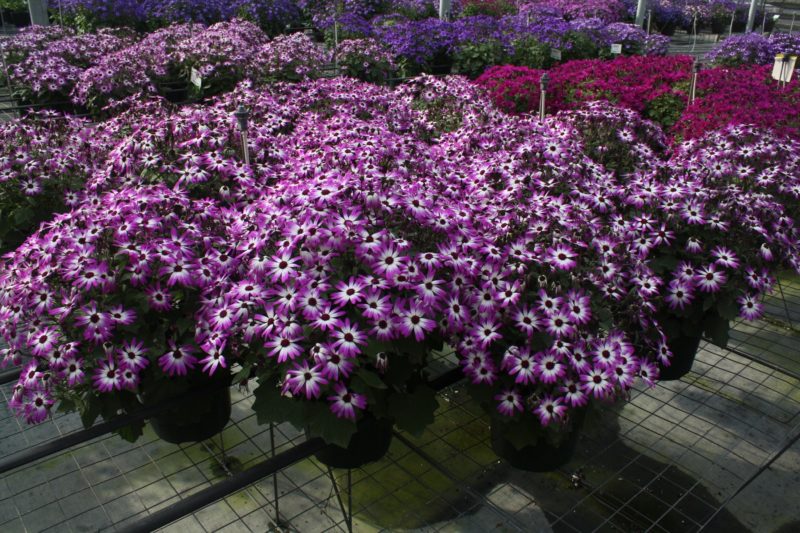
Get Ready for Senetti with These Production Pointers!
{Sponsored} For early spring color, you can’t beat Senetti pericallis from Suntory Flowers. Flower count can be as high as 200 on a plant grown in a 10-inch pot in electric shades of blue, purple, pink and magenta.
Senetti likes it cool and can withstand temperatures as low as 35° F, a natural fit for early spring sales.
CULTURE NOTES
Rooting:
Keep rooting media pH at 5.6 to 5.8. Use well-balanced fertilizer after roots develop, 10 days after sticking. Set air/venting temperature at 75° F, bottom heat at 68° F. Keep humidity high, 90% and up, ensuring cuttings are moist and turgid.
After 14 days of misting/fogging, cut misting time in half. Air humidity level should be 60 to70%. After 21 days, stop misting. During bright days, shading may be required to protect cuttings.
A week prior to shipping or transplanting, cuttings can be given soft pinch to encourage bushy plant. Senetti isn’t a uniform series. There are differences in rooting times among the varieties.
Group 1 (Deep Blue and Blue Bicolor) is fast, about 10 days.
Group 2 (Magenta Bicolor, Violet Bicolor, Pink Bicolor and Baby Senetti varieties) takes 14 days.
Group 3 (Magenta) is the slowest at 18 days.
Growing On:
Transplant rooted cuttings into finish pots. Keep pH at 5.6 to 6.0.
While Baby Senetti can be transplanted into 4-inch pots, 8-inch or larger is recommended for full-sized Senetti varieties or the Sparkle series.
Crop time is 10 to 20 weeks depending on final size, temperature and number of cuttings transplanted.
Grow in a cool, airy climate, 35 to 40° F, for a toned, finished plant. Use ventilation when temperatures reach 48 to 50° F. Keep humidity low. Higher temperatures will affect flower timing. Cool period is helpful.
Light:
Senetti is day-neutral. Light levels of 5,000-6,000 foot-candles are ideal. During high light, shade may be needed. Thirty percent shade is optimum in Southern states. Shading during last three weeks of production may cause internodes to stretch.
Irrigation/Fertility:
After transplant, provide Senetti with 250-ppm nitrogen, 20-10-20, first four weeks of production. Senetti is a heavy iron feeder. Keep soil pH between 5.5 and 6.0 with monthly drench of STEM from Peter’s Excel.
Senetti’s root system will require a lot of water on bright, warm days. This should be done with clear water only. We recommend Senetti be grown on dry side.
Three weeks prior to sale, switch to phosphorous fertilizer (10-30-20) to support flower production.
Plant Growth Regulators:
Senetti is responsive to B-Nine (daminozide), which can be used at 2,000 ppm every 14 days, depending on crop timing. Florel (ethephon) can be used at rooting stage to promote lateral shoots. Some growers apply Bonzi at 2 ppm as late drench once plants are established. ‘Senetti Light Blue Bicolor’ needs extra treatment early on and stronger application at flower development.
Pests and Diseases:
Monitor for aphids, spider mites, whiteflies and thrips. Use fungicides to prevent powdery mildew and root rots. Keep humidity levels low and pH under 7.2.
For more information about Senetti, visit www.senetti.com.


 Video Library
Video Library 




















